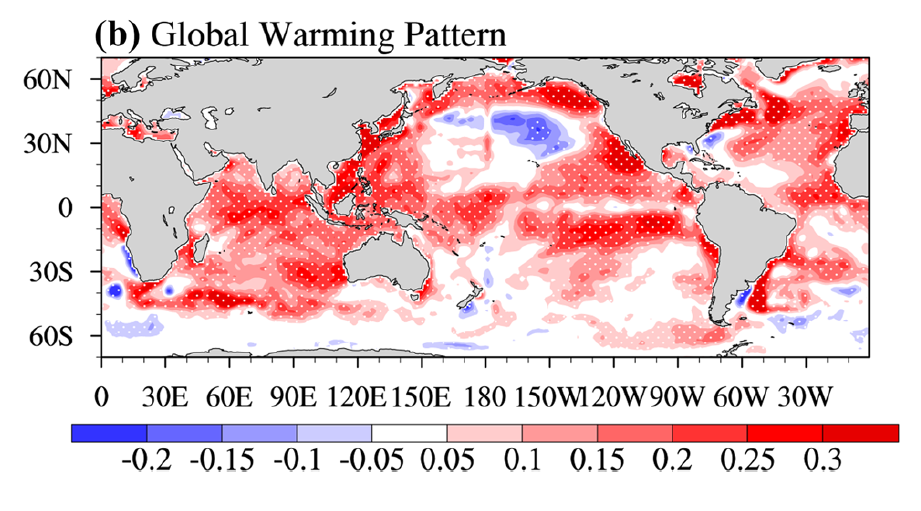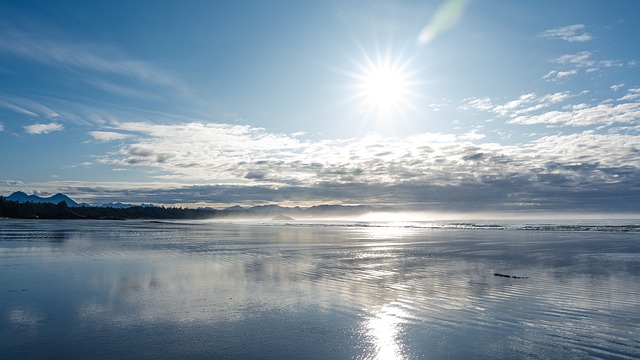Klimaalarm am 3. April 2019 im NDR:
Ostsee: Wie der Klimawandel dem Hering zusetzt
Der Hering ist eine der wichtigsten kommerziell genutzten Fischarten in der Ostsee. Gab es den Schwarmfisch in der Ostsee früher so häufig, dass er als „Arme-Leute-Essen“ galt, verzeichnen Wissenschaftler inzwischen einen drastischen Rückgang: Laut dem Internationalen Rat für Meeresforschung (ICES) ist in der westlichen Ostsee der Bestand an erwachsenen Heringen, die Nachwuchs erzeugen können, von rund 300.000 Tonnen im Jahr 1991 auf rund 105.000 Tonnen im vergangenen Jahr gesunken. Einen Rückgang verzeichnen Forscher auch bei den Heringslarven. Als Grund vermuten sie den Klimawandel, der zur Erwärmung der Ostsee führt und damit zu phänologischen Veränderungen, also zur Verschiebung jahreszeitlich bedingter Wachstums- und Entwicklungsphasen.
[…] Über die Gründe für diese Entwicklung werde seit Langem geforscht. „Unsere Haupthypothese ist inzwischen, dass die Heringslarvenentwicklung stark an die Verläufe des Winters und die Temperaturen im Frühling gekoppelt ist“, sagt Polte. „Wir haben beobachtet, dass es Veränderungen in der Phänologie gibt, also den jahreszeitlich bedingten Wachstums- und Entwicklungsbeziehungen in der Tier- und Pflanzenwelt. Und wir vermuten, dass unter Wasser ähnliches passiert wie an Land, wo sich aufgrund des Klimawandels bestimmte Blüten und die sie bestäubenden Insekten zunehmend verpassen könnten.“
Die nächsten Projektförderanträge des Thünen-Instituts werden angesichts der wohlfeilen Beförderung des Klimaalarms wohl ohne Probleme durchgehen. Allerdings hat das Institut eine Kleinigkeit übersehen, denn die Heringe scheinen stark vom AMO-Ozeanzyklus beeinflusst zu sein, der eine Periode von 60-80 Jahren hat. Die Synchronizität zwischen Heringen und Ozeanzyklen ist eine alt bekannte Tatsache, siehe z.B. Alheit et al. 2014:
Reprint of “Atlantic Multidecadal Oscillation (AMO) modulates dynamics of small pelagic fishes and ecosystem regime shifts in the eastern North and Central Atlantic”
Dynamics of abundance and migrations of populations of small pelagic clupeoid fish such as anchovy (Engraulis encrasicolus), sardine (Sardina pilchardus), sardinella (Sardinella aurita), sprat (Sprattus sprattus) and herring (Clupea harengus) in the eastern North and Central Atlantic between Senegal and Norway vary in synchrony with the warm and cool phases of the Atlantic Multidecadal Oscillation (AMO). This is shown by compiling retrospective data on fish catches and anecdotal observations, which in some cases date back to the mid-19th century. The AMO is defined as the de-trended mean of North Atlantic (0–60°N) sea surface temperature anomalies. However, it is not primarily the temperature which drives the dynamics of the small pelagic fish populations. Instead, the AMO seems to be a proxy for complex processes in the coupled atmosphere–ocean system of the North Atlantic. This is manifested in large-scale changes in strength and direction of the current system that move water masses around the North Atlantic and likely involves the North Atlantic Oscillation (NAO), the Atlantic Meridional Overturning Circulation (AMOC), the Mediterranean Overflow Water (MOW) and the subpolar gyre (SPG). The contractions and expansions of the SPG apparently play a key role. This was particularly obvious in the mid-1990s, when the SPG abruptly contracted with the result that warm subtropical water masses moved to the north and east. Small pelagic fish populations in the eastern North and Central Atlantic, including those in the Mediterranean responded quickly by changing abundances and migrating northwards. It seems that the complex ocean–atmosphere changes in the mid-1990s, which are described in the text in detail, caused a regime shift in the ecosystems of the eastern North and Central Atlantic and the small pelagic clupeoid fish populations are the sentinels of this shift.
Die Atlantische Multidekadenoszillation (AMO) prägt auch die Temperaturen der Ostsee, wie Kniebusch et al. 2019 kürzlich dokumentierten. Die starke Erwärmung von Teilen der Ostsee seit den 1980er Jahren gehe zumindest zum Teil auf das Konto der AMO. Näheres können Sie in unserem Artikel „Bittere Erkenntnis: Auch Ostsee-Heringe müssen sich an den Atlantikzyklus halten“ nachlesen.
Haben Sie genug vom Klimaalarm? Dann schreiben Sie doch einfach mal an den NDR-Rundfunkrat und informieren ihn über diese Panne in der NDR-Berichterstattung.
————————————-
Klimarekonstruktionen anhand von Eiskeilen in der Arktis? Hört sich schräg an, ist aber möglich. Nachzulesen hier.
————————————-
Die ganze Erde erwärmt sich, daran könne man sehen, dass der Mensch Schuld daran hätte. Denn nur der Mensch könne die Erde in ihrer Gesamtheit so perfekt im Gleichlauf erwärmen. Aber stimmt das überhaupt? Ein schneller Faktencheck befördert die Behauptung schnell in das Land der Märchen. Ein riesiges Meeresgebiet um die Antarktis herum erwärmt sich nämlich kein bisschen. Im Gegenteil: Der Südliche Ozean kühlt sich sogar immer weiter ab. Kein Klimamodell kann diesen Trend reproduzieren. Zum Glück liegt das Gebiet so „unvorteilhaft“ und verzerrt ganz unten im Süden auf den Landkarten, dass der Effekt meist übersehen wird.
Aber auch eine andere Region bereitet den Klimaforschern Kummer. Der Nordpazifik will sich auch partout nicht erwärmen, ganz entgegen den Vorgaben des IPCC. Seit 50 Jahren kühlt dieser Meeresbereich immer weiter ab. Huang et al. 2019 haben sich den Effekt näher angeschaut. Hier zunächst die Karte mit dem ominösen blauen, Kältefleck im Nordpazifik:

Abbildung: Temperaturtrends der globalen Ozeanoberflächentemperaturen. Rot=Erwärmung, blau=Abkühlung. Quelle: Huang et al. 2019
Die Autoren wundern sich laut über diese Kälteanomalie, die so gar nicht mit den CO2-dominierten Klimamodellen zusammenzupassen scheint. Anhand von Klimasimulationen kamen sie zu dem Schluss, dass sich die Westwinde und Stratus-Wolken wohl verstärkt haben. Letztendlich soll dies mit einem Temperaturmuster (Teleconnection) im tropischen Pazifik zusammenhängen. Und schon sind wir wieder im Bereich der „Ozeanzyklen“ aus der erweiterten Familie der PDO, ENSO etc. Die latent unterschätzte natürliche Klimavariabilität lässt schön grüßen. Hier der Abstract des Papers von Huang et al. 2019:
Why SST trend in North Pacific is peculiarly negative against warming trend elsewhere since 1958
A simple theoretical model is constructed to understand the cause of a peculiar cooling trend in North Pacific under the background of the greenhouse gases induced global warming during the past 50 years. It is found that the North Pacific cooling is caused by the increase of surface upward latent heat flux due to the atmosphere and the decrease of surface downward shortwave radiative flux. The former is attributed to enhanced low-level westerlies, while the latter is caused by the increase of stratus cloud over North Pacific. An atmosphere general circulation model is utilized to investigate the cause of the wind and low-level cloud changes. It is found that the strengthened westerly in North Pacific is the result of an atmospheric teleconnection pattern forced by the SSTAs warming in the tropical Pacific. The SSTAs warming in other tropical basins, along with the local cooling in North Pacific, tends to reduce the tropical Pacific SSTAs forcing effect. In addition, the increased local low-level cloud response to the tropical Pacific SSTAs forcing is also responsible for the cooling trend in North Pacific. The increased local stratus cloud may enhance the cooling through a positive feedback among the SST, atmospheric static stability and stratus cloud.
